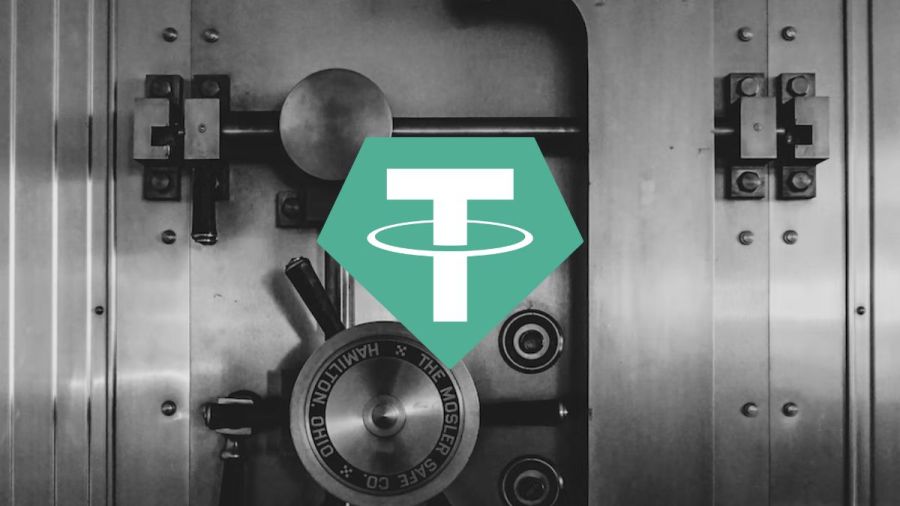Tether Transfers Millions to Foreign Banks
CryptoPress
According to Forbes, Tether moved $37 billion of its reserves to an offshore bank called Capital Union in 2021 after settling with the New York Attorney General’s office over claims it had misrepresented its finances. Tether has also asked Ansbacher, another Bahamian bank, to hold some of its reserves. The company has also been using Cantor Fitzgerald, a big New York financial services company, to hold U.S. Treasury bills. But Tether has never told the public who its banking partners are. This secrecy and size have given it the nickname “the coin that could wreck crypto.”
As a stablecoin that is supposed to be tied to the U.S. dollar, USDT is said to keep its price stable by being redeemable at a rate of 1:1. Even so, Tether has never let a full audit of its reserves be done. Instead, it has only given periodic “attestations” from third-party accounting firms that show snapshots of its accounts. The full breakdown of Tether reserves and how they are given to banking partners is still unknown, which makes it hard to know how reliable the company is.
Tether Moves Billions to Offshore Banks
Forbes has learned that Tether moved $37 billion of its reserves to an offshore bank called Capital Union in 2021, making it the custodian of Tether’s largest pool of reserves based on its circulating supply. After settling with the New York Attorney General’s Office over claims that it had lied about its finances, Tether made the change. Tether has never talked about its relationships with Capital Union, Ansbacher, or Cantor Fitzgerald in public. This means that nobody knows how the Tether reserves are split up and how they are given to banking partners.
Tether’s Lack of Transparency
Tether has been opaque about who leads the company, and its chief investment officer’s identity has been kept a secret, according to Forbes. Tether has never had a full audit of its reserves, even though it is used a lot for payments, transfers, loans, and high-frequency trading. Its closest competitor is Boston-based Circle, which runs the stablecoin USD Coin. Circle publishes information about the specific Treasury securities, CUSIPs, and maturity dates that back its $41 billion digital dollar.
Tether’s Dependability
The lack of information about Tether’s reserves has caused people to worry about how reliable the $68 billion stablecoin is. Tether has said that USDT is “fully backed by collateral,” but it has never shown an audit of its balance sheet and has generally refused to name its banking partners.
Tether’s Reputation
Because Tether is both secretive and huge, it is known as “the coin that could wreck crypto.” Investigators have been trying for a long time to find out how Tether’s accounting works. Tether was made to be tied to the U.S. dollar, which means that the price of one Tether (USDT) should be about $1 with less price volatility than bitcoin or ether.
In short:
- Tether moved $37 billion of its reserves to an offshore bank called Capital Union in 2021.
- Tether has never publicly disclosed its banking partners, raising concerns about the dependability of the $68 billion stablecoin.
- Despite being heavily used for payments, transfers, and loans, Tether has never submitted to a full audit of its reserves.
- Tether’s combined secrecy and enormity have earned it the reputation of “the coin that could wreck crypto.”
© 2024 Cryptopress. For informational purposes only, not offered as advice of any kind.
Latest Content
- Crypto Market Update: April 25, 2024
- Renzo’s Restaked ETH Depegs to $700: DeFi Platforms Gearbox and Morpho Face Liquidations
- Crypto Market Update: Insights and Trends for April 23, 2024
- On April 24, the $RTF Token from Oleksandr Usyk’s READY TO FIGHT Project Will be Listed on WhiteBIT
- Crypto Market Update: Key Trends and Insights for April 22, 2024
Related
- Tether swaps CP for US Treasuries Tether, the corporation behind the $69 billion USDT stablecoin, liquidated its commercial paper....
- Tether Announces Reduction In Commercial Paper Reserves Tether Treasury announced a reduction in commercial paper reserves....
- FV Bank Becomes Principal Member of Visa. Set to Launch Cryptocurrency Linked Visa Card Programs FV Bank redefines banking with first vertically integrated banking, digital asset custody, and debit and credit card offerings PUERTO RICO Oct 29 2021 (Blockchain Wire) FV Bank (www.fvbank.us), the rapidly growing U.S. licensed global challenger bank and digital asset custodian, has announced that...
- Socure Ranked as the Fastest-Growing Identity Verification Company in North America on the 2021 Deloitte Technology Fast 500™ Socure Ranked as the Fastest-Growing Identity Verification Company in North America on the 2021 Deloitte Technology Fast 500...




